One of the hot topics in the world of golf is Ben Hogan's swing and what exactly his secret was. Mike Maves of Secret In The Dirt has done a pretty convincing job of establishing that The Move was critical to Hogan's swing. However, I don't think The Move was the only thing that was special about Ben Hogan's golf swing.
The Power Triangle
One common way of teaching the golf swing -- I was taught it and came across it in books numerous times -- is to have the student form and swing what is called the Power Triangle.

The Power Triangle
The Power Triangle is the shape that is formed by the arms and the shoulders. The advantage of the Power Triangle is that it is consistent with the Double Pendulum model of the swing, but the problem with the Power Triangle is that it isn't what you see in the swings of the best golfers.
Ben Hogan and the Power Triangle
If you look at the swing of Ben Hogan, from the front you can see something that looks like the Power Triangle at the Point Of Contact.

Ben Hogan
From the front, it's not a perfect match with the Power Triangle, but it's in the neighborhood.
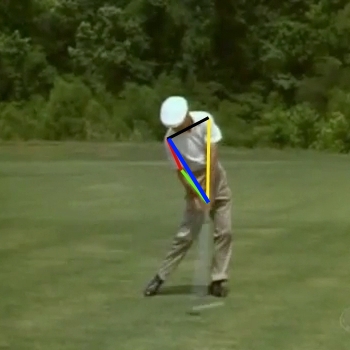
Ben Hogan
However, if you look at a down the line view of Ben Hogan's swing, you will see something very different.
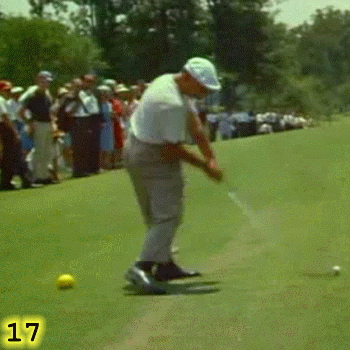
Ben Hogan
In particular, notice how Hogan's back arm, rather than being straight at the Point Of Contact, is bent with his back elbow at his back hip.
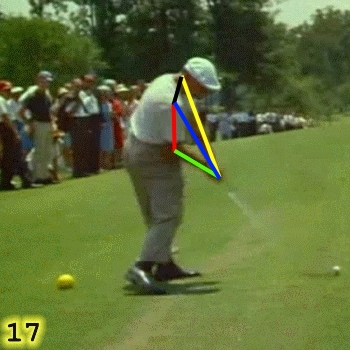
Ben Hogan
Ben Hogan and the Baseball Swing
When I look at Ben Hogan's swing, I see him employing the same principles that you see in the swings of many of the best baseball hitters and that I discuss at length in my piece on Acceleration, Deceleration, and Whip.
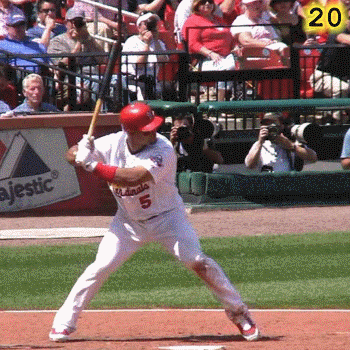
Albert Pujols' Swing
In the clip below, watch Ben Hogan's back, or right, elbow.
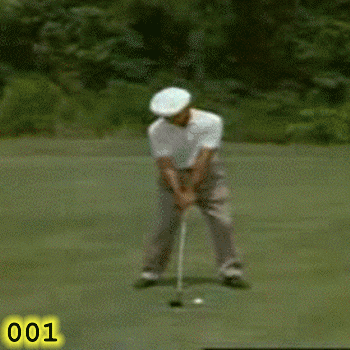
Ben Hogan's Swing
Stop Frame
What causes the golf club to come out of lag?
It's not going to come out of lag unless something causes it to; unless something decelerates, causing energy to be transferred to the golf club.
I believe that the thing that causes the golf club -- and the baseball or softball bat -- to come out of lag, and the Hinge Angle to start to change, is the deceleration of the back elbow at the back hip.
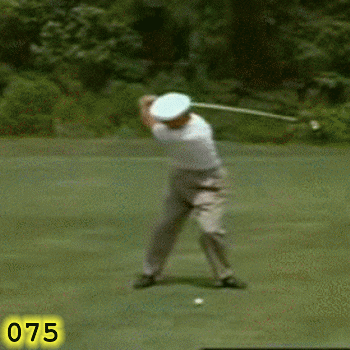
Ben Hogan's Swing
As a result, the barrel clearly Whips around Ben Hogan's hands and through the Point Of Contact.
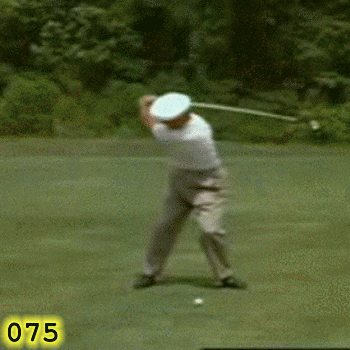
Ben Hogan's Swing
I don't know whether Ben Hogan was consciously aware of the importance of this, but you can see him rehearsing it in these clips...
...if you watch his back elbow and its position relative to his back hip.
What's interesting is that you can see the same movement pattern in the swings of other great golfers
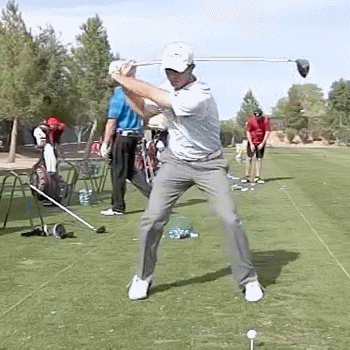
Jamie Sadlowski
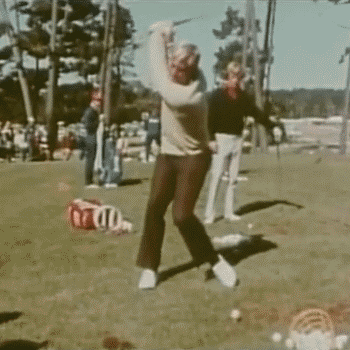
Jack Nicklaus
Watch their back elbows and notice how their back elbows go to, and then stop at, their back hips. That coincides with the Hinge Angle changing and the club coming out of lag.
The Triple Pendulum and the Baseball Swing
As I point out in my piece on Acceleration, Deceleration, and Whip, you can see the same pattern in the clip below of Allen Craig hitting an upper deck home run into the left field corner.
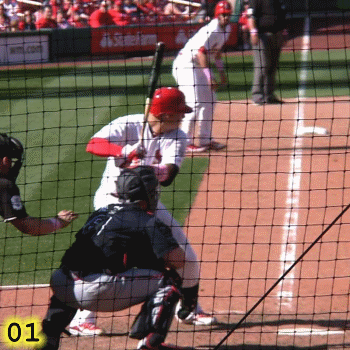
Allen Craig
Home Run to Left Field Corner
Upper Deck
The thing to notice is how Allen Craig's back elbow moves virtually identically to Ben Hogan's back elbow; his back elbow drops and the hinge angle stays constant until his back elbow reaches and then stops at his back hip. At that point, the barrel rapidly whips around his hands.
You can see the same movement pattern in the clip below of Allen Craig.
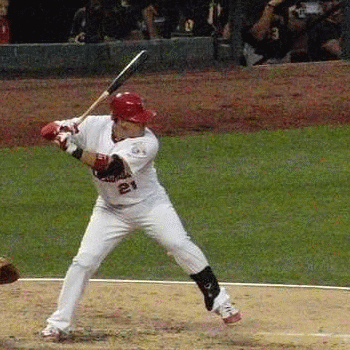
Allen Craig
Home Run to Left Field
Frames 35-76
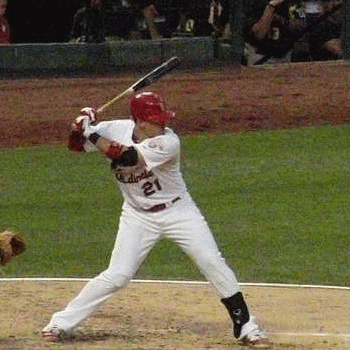
Allen Craig
Home Run to Left Field
Frames 57-76
You can see the same pattern in the swings of other good hitters.
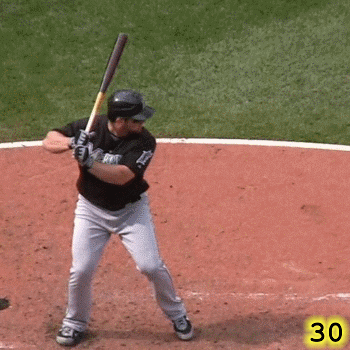
Dan Uggla

Dan Uggla
Extension vs. Connection
In looking at the swing of Ben Hogan, and comparing what golf instructors advocate to what Ben Hogan actually did, you can hear echoes of the Extension vs. Connection battle that still rages in the world of baseball and fast pitch softball.
In the world of baseball and softball, people preach that hitters should be at Extension at the Point Of Contact (aka the Power V). However, when you look at video clips of the best hitters, you will see they they are generally Connected at the Point Of Contact.
In the world of golf, people preach that golfers should be at Extension at the Point Of Contact (aka the Power Triangle). However, while some golfers are at Extension at the Point Of Contact, many of the greatest golfers are still Connected at the Point Of Contact.[1]
Notes
[1] I'm still trying to figure out exactly what it means, but over the years Tiger Woods has moved from being Connected at the Point Of Contact to being at Extension at the Point Of Contact. You have to wonder if that has something to do with his declining consistency over the years.